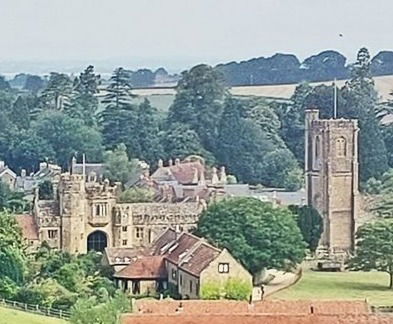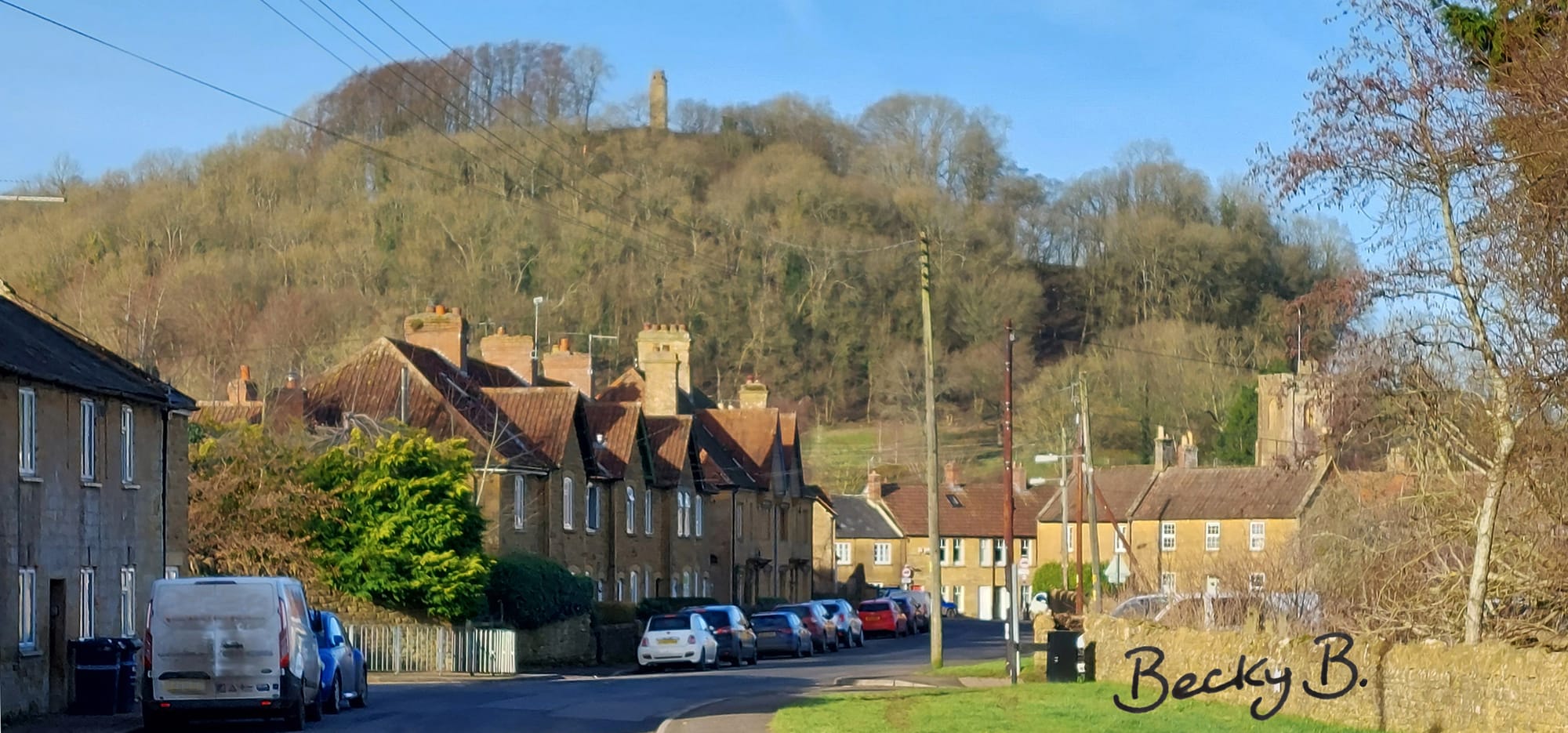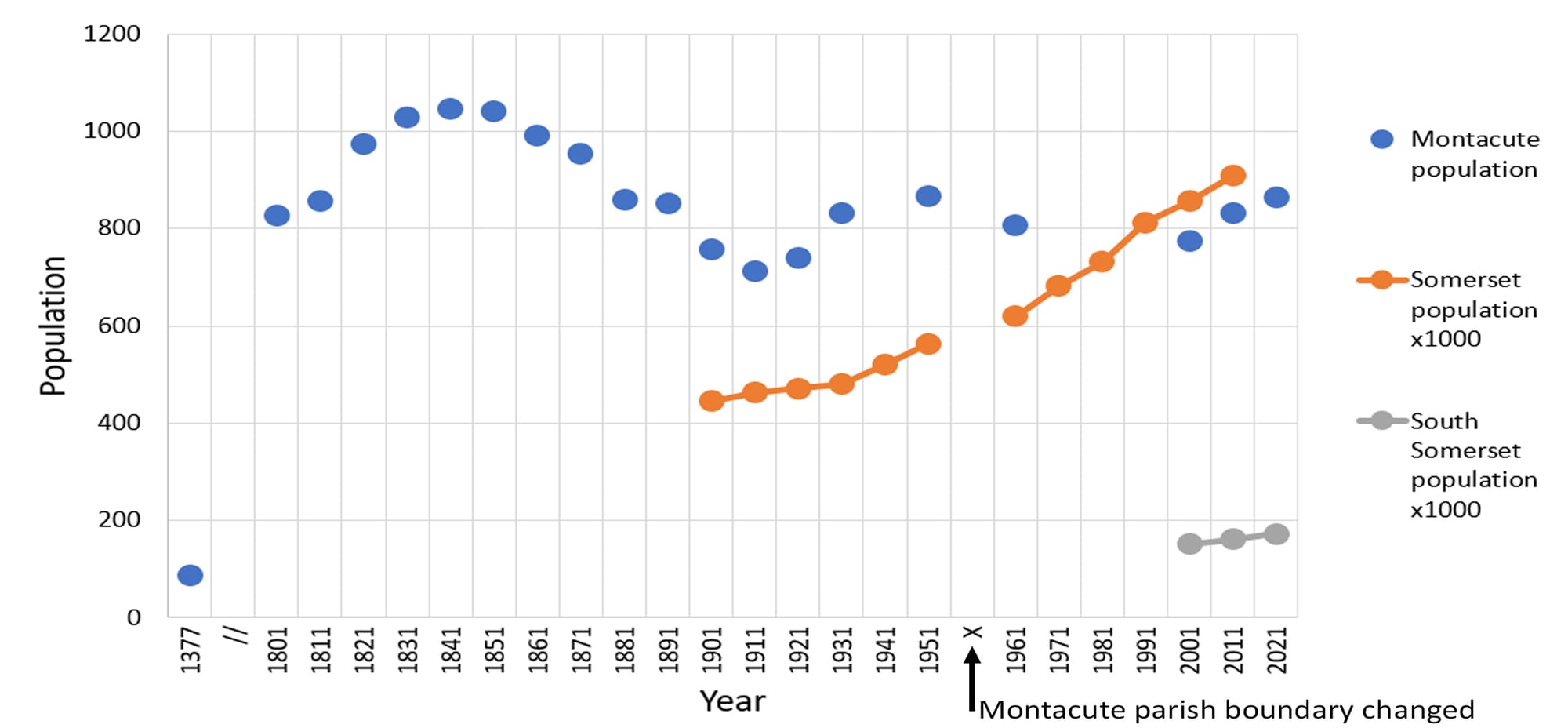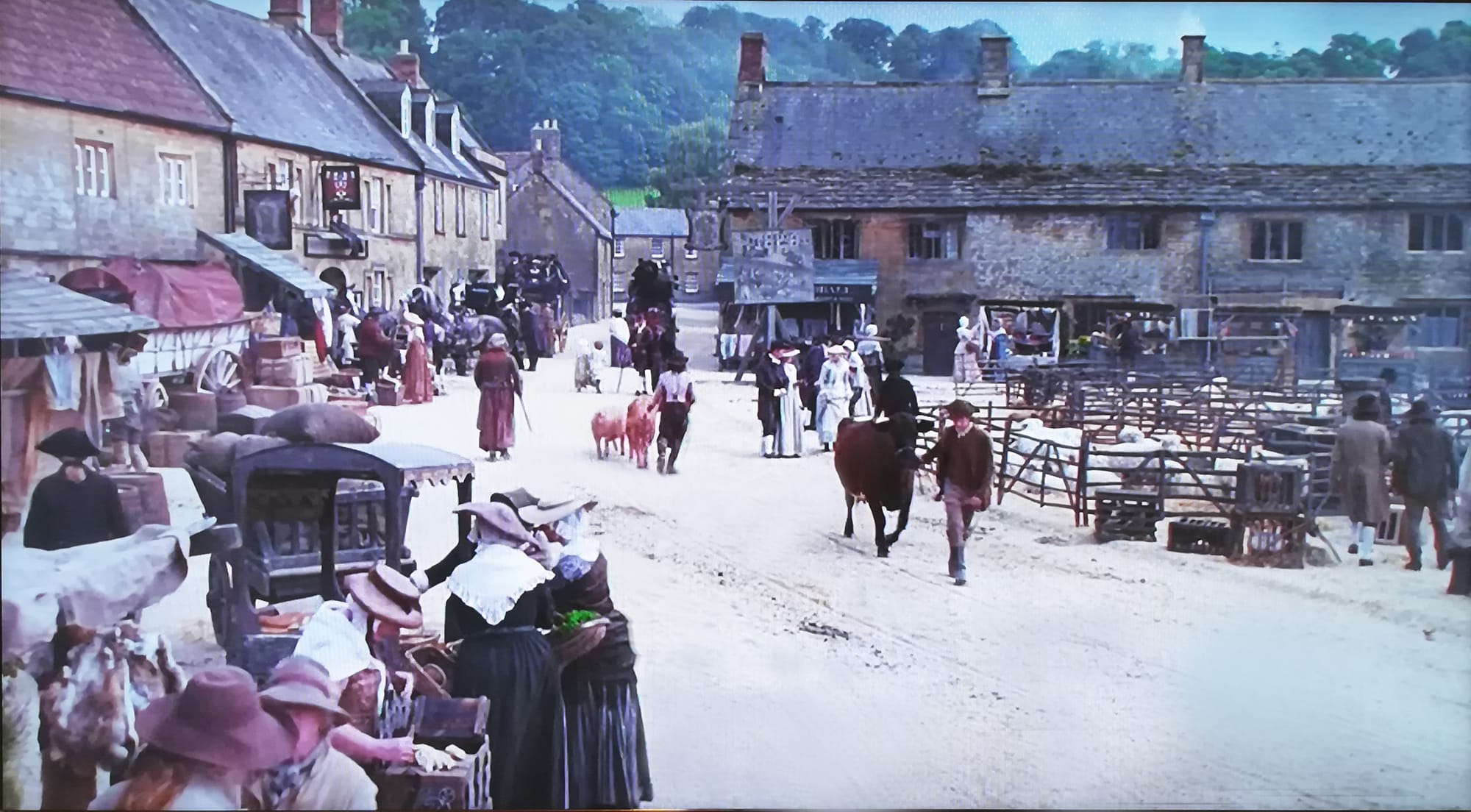A bit about Montacute

(Image of Montacute from the south, copyright R. Bosson 2021).
Montacute is a picturesque village in South Somerset, known for its golden-coloured hamstone houses and scenic countryside. At its centre is Montacute House, a grand Elizabethan mansion owned by the National Trust, renowned for its extensive portrait collection. The village’s history spans centuries, from the remains of Montacute Priory to the legends of St Michael’s Hill with its iconic tower.
St Michael’s Hill
One of the most notable features of Montacute is St Michael’s Hill, which rises prominently above the village. The hill is crowned by a Georgian hamstone tower, a key landmark visible for miles around. The hill plays a central role in the Legend of the Holy Cross. You can find more details about the tower on the St Michael's Hill and Montacute Tower page, and explore nearby routes on the Circular Walks Around Montacute page.
Below: Photograph of Yeovil Road, Montacute, showing the Tower on St Michael's Hill dominating the village (Photo copyright R. Bosson 2023).

Population and Life Expectancy
A 2009 study found that Montacute residents had the longest life expectancy in England; residents attribute their longevity to growing their own fruit and vegetables.
In 2021, the population was 865, not far from the 827 inhabitants recorded in 1800. This represents a relatively stable population over the last couple of centuries, with historical records showing a taxable population of 87 adults in 1377, a peak of around 1,150 in the mid-1800s, and a gradual decline to today’s levels.
Below: graph showing Montacute’s population trend alongside data for Somerset and South Somerset.

Social Housing
Following the 1906 Liberal Housing Act, Montacute Parish Council successfully petitioned the District Council to provide cheap housing for workers employed at the Ham Hill quarries. As a result of this Fullfitt (Fullfoot?) terrace was completed in October 1912. This lovely terrace of hamstone cottages on the east side of Townsend was part of the very first wave of social housing in England. There's a good article about them in Country Life Magazine 20 May 1976 by W. Harbin Osborne; the plots are about 5 yds by 60 yds so plenty of room for laundry, veggies, some chicken and maybe a pig out the back!

Historical Continuity
One of the most interesting aspects of Montacute is the continuity of surnames in the village. Records from the 19th century censuses, and earlier estate documents from the Phelips family of Montacute House, show that many family names have remained in the area for centuries. This continuity contributes to the village's strong sense of historical identity.
Montacute in Film and TV
Montacute’s historic architecture has made it a popular filming location. In 1995, the village was featured in Ang Lee’s adaptation of Sense and Sensibility by Jane Austen. Montacute House and its gardens stood in for the Cleveland estate (Charlotte’s residence), while parts of Montacute Borough were used as scenic backdrops. Some local residents even had the chance to appear as extras, and photographs from the set can still be seen on display in The Phelips Arms.
Below: Photograph showing Ang Lee's vision of how the Borough might have looked in the late 1700s:

The amazing Penelope Keith visited Montacute Borough while performing in Season 3 Episode 3 of the classic BBC sitcom "To the Manor Born"; the scenes in the Borough start at about 14 minutes into this YouTube clip (https://www.bbc.co.uk/iplayer/episode/b007bl9n/to-the-manor-born-series-3-3-horse-vs-cars):
In 2015, Montacute House was used as a filming location for the BBC drama Wolf Hall, where it stood in for Henry VIII’s Greenwich Palace, complete with royal tents and jousting scenes in the grounds. More recently, the house featured in an episode of The White Princess, a mini-series adaptation of Philippa Gregory’s novel.
And it seems that Montacute House isn’t just a star in its own right—one of its Jacobean four-poster beds had a "supporting role" for Johnny Depp in the 2004 film The Libertine.
Next Steps: Discover More About Montacute
If you’re intrigued by Montacute’s history, why not explore more?
Read about the Origins of Montacute - Learn the fascinating story behind the village’s name and its early history.
Check out Montacute Snippets – Dive into other interesting topics and lesser-known facts about the village.
Explore the Village Gallery – Scroll to the bottom of the homepage for photos that capture Montacute’s charm and heritage.
